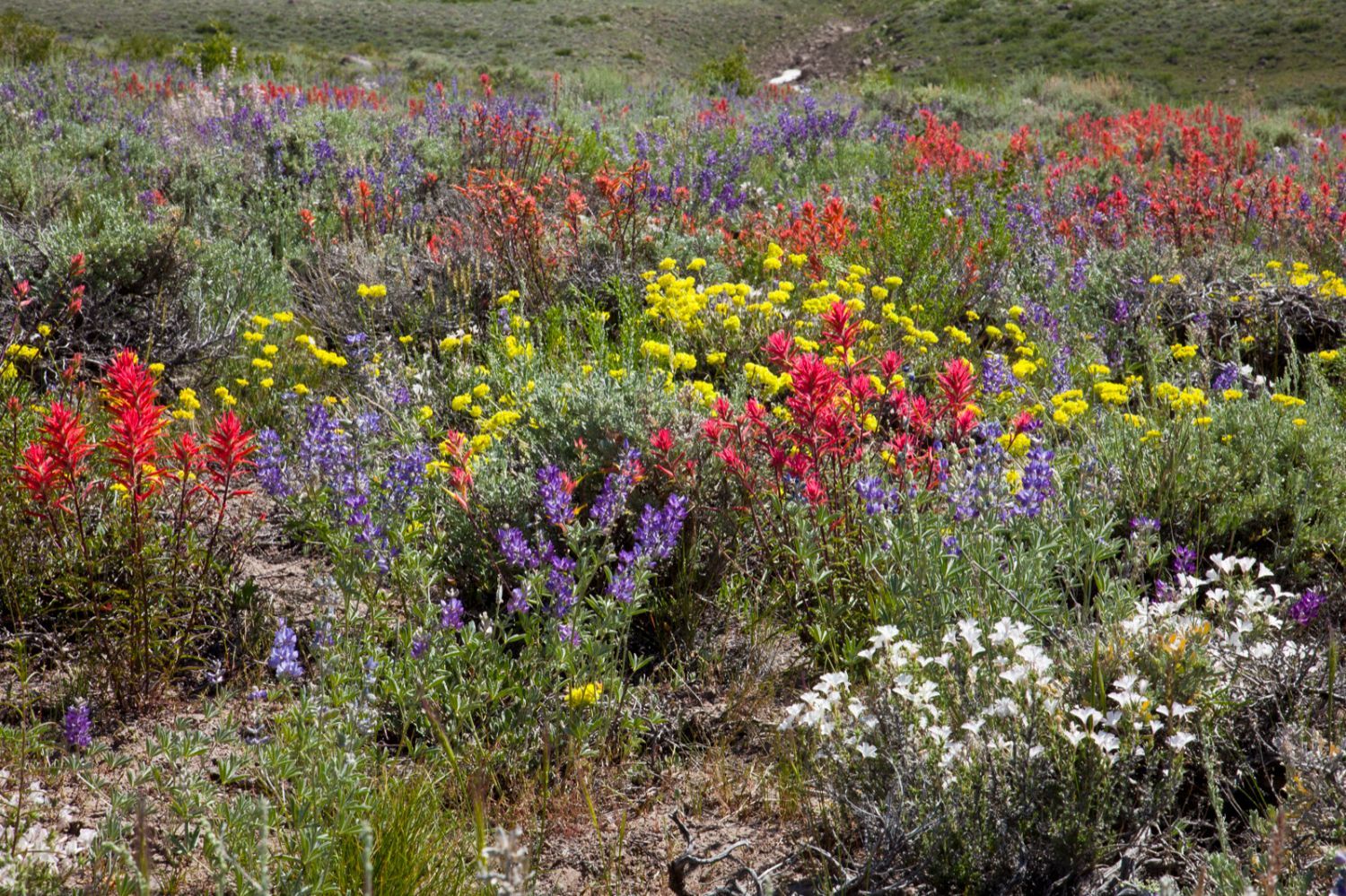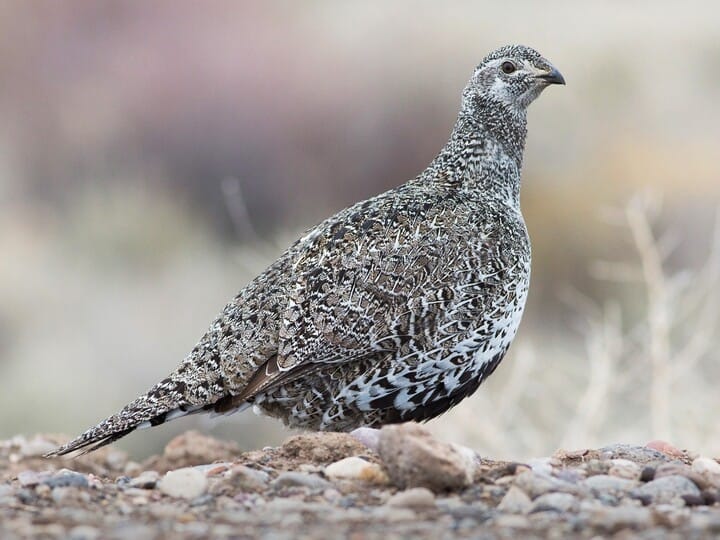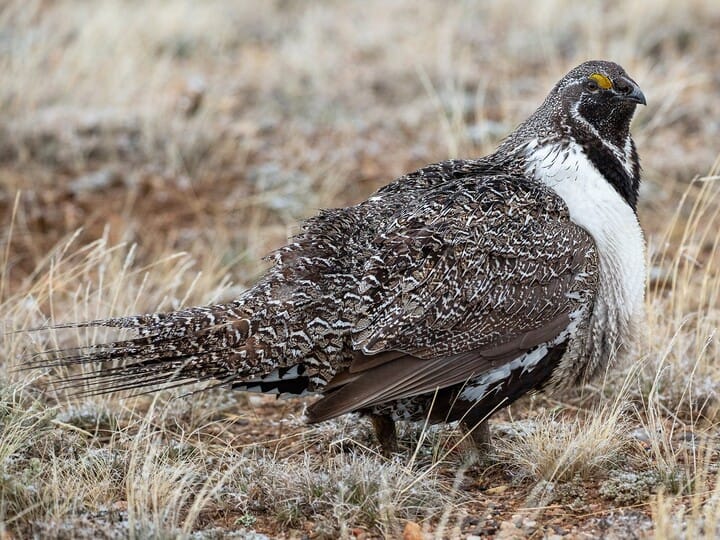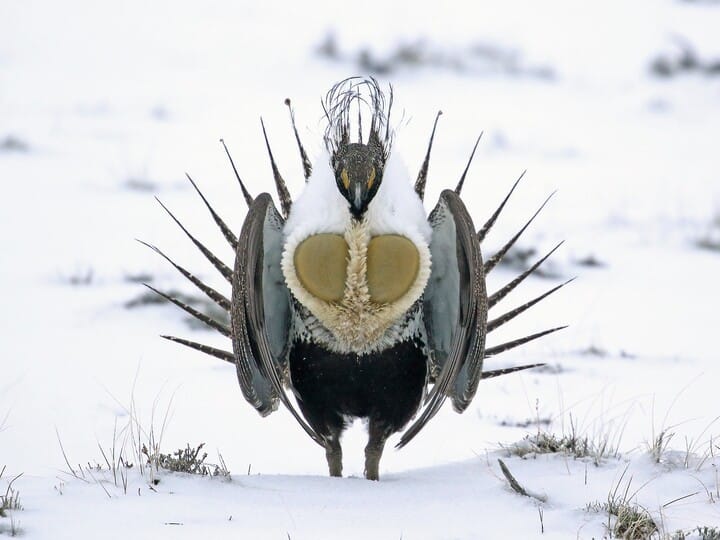 | Summer in Swing Dear Friend, It is no suprise that after an extra strong winter it seems all the seasons have been delayed in the Eastern Sierra — a cool, "June Gloom," started off summer, but, zooming through July, it seems we are finally in full summer swing! Many roads into Bodie Hills remain impassable, this time not because of snow on the ground, but its marks upon the land — record-breaking runoff has flooded and gouged out the dirt roads of the Bodie Hills. If you plan to make a visit, be prepared to travel by foot or bike. The silver lining? The hills are green and wildflowers are abounding after such a bountiful water year. If you are able to get out into the Bodie Hills this summer, be sure to be on the lookout for the many special plants out there: the Bodie Hills are actually home to 33 rare plant species! Check out this guide to the Eastern Sierra's wildflower hotspots to learn more about some of the species you can find in the Bodie Hills and beyond. Don't forget to send us your swingin' summer pictures by emailing allison@friendsoftheinyo.org! They can be featured in future issues of this newsletter or on our social media platforms: |
| | Updates Readers who received the last issue of the Bodie Hills Conservation Partnership quarterly will recognize the below news items; read on for updates. |
|
|
|  California Sage-Grouse Given Interim Protection under the California Endangered Species
Act. by Ileene Anderson of the Center for Biological Diversity, a BHCP member organization. Greater sage grouse are iconic birds of the American West and the sagebrush sea. The Bodie Hills is a stronghold for a genetically unique group of greater sage grouse known as the Bi-state sage grouse which straddles the California/Nevada border. While the Bi-state sage grouse used to be connected to other populations of greater sage grouse, based on genetic divergence, it is estimated that connectivity was severed between thousands to tens of thousands of years ago. Now, the population’s range has shrunk from both the northern and the southern areas of their range, and the number of birds has dropped to levels that are unsustainable to maintain the population. The genetically unique Bi-state sage grouse are not the only sage grouse in California. In northeastern California, the greater sage grouse remain genetically connected to greater sage grouse populations in Nevada, Oregon and further east, but the population numbers and range in California are dwindling, with the birds no longer found in two counties where they had lived for tens of thousands of years. In response to these declining population numbers, my organization, the Center for Biological Diversity, submitted a petition to the California’s Fish and Game Commission to consider listing the California sage grouse (both the Bi-state and northeastern populations) as threatened or endangered species under the California Endangered Species Act in November 2022. |
| On June 14, 2023, in response to our petition, the California Fish and Game Commission elevated California’s sage grouse to a Candidate species, providing full California Endangered Species Act protections to the birds for at least a year. In the interim, the Department of Fish and Wildlife is conducting a scientific review and will recommend to the Commission whether the birds should be permanently protected under the Act. The Department of Fish and Wildlife’s research and recommendation should occur within a year, but often requires more time for a thorough review.
Prior to the Commission’s action, the Department of Fish and Wildlife’s report, filed with the California Fish and Game Commission earlier this year, concluded that the petition provided enough scientific information to show that protecting the birds as threatened or endangered in California may be warranted and recommended elevating the birds to a Candidate species under the California Endangered Species Act. The Commission followed the recommendation. Greater sage grouse are famous for their showy plumage and elaborate mating dances, during which the males make popping sounds with large, inflated air sacs. There are two separate populations of greater sage grouse in the state: a northern California population in Lassen and Modoc counties and the Bi-state sage grouse population, which is found east of the Sierra Nevada Mountains straddling the California-Nevada border in Inyo and Mono counties. The Bi-state population is a genetically unique and isolated population of greater sage grouse, or "distinct population segment (DPS)," with nearly all subpopulations at risk of being wiped out. While the northern California sage grouse population persists in Lassen and Modoc counties in northeastern California, it has been lost from eastern Siskiyou and Shasta counties. The remaining population is contiguous with other populations in Nevada, and birds have been moved regularly from Nevada into California to aid in repopulating the northern California sage grouse population, with limited success. The Bi-state sage grouse population persists here, east of the Sierra Nevada Mountains straddling the California-Nevada border in Inyo and Mono counties in California and
other counties in Nevada. The Bi-state population’s habitat continues to diminish both from the south
and the north, reducing their overall range. With these declines across the range, the Bodie Hills subpopulation is now the largest one remaining in the Bi-state DPS, but it too is declining. |
|
|
|  | Female sage grouse: females are speckled brown and gray and have brown speckling on the throat as well as a black belly. Photo by Darren Clark. |
|  | Male sage grouse: males are speckled brown and gray and have black bellies and throats as well as a white breast. Photo by Ryan Jones. |
|  | A male sage-grouse's famous display: tail feathers fanned out with his 2 yellow air sacs inflated. Photo by Andrew Spencer. |
|
|
| Unfortunately, both the Northern and the Bi-state sage grouse populations in California are at imminent risk of extirpation due to threats from habitat loss from land development, agricultural habitat conversion, invasive species, climate change, off-road vehicle usage, increased predation, disease, wildfire, and climate change among other threats. These threats reduce the viability of the species in all or a significant portion of its range. Many of the sage grouse’s sub-populations in California are below the minimum population threshold, increasingly isolated, and at imminent risk of disappearing. The greater sage grouse is almost completely dependent on large expanses of sagebrush dominated habitat for its existence. Greater sage grouse exhibit fairly strong site fidelity to seasonal habitats for nesting, brood rearing, and wintering. While there is no conclusive data regarding the minimum sagebrush patch size required to support populations of sage grouse in California, seasonal and annual movements emphasize the need for large, functional landscapes to support viable sage grouse populations. Currently the Bodie Hills provides large functional landscapes of sagebrush and has the most robust subpopulation of sage grouse of the Bi-state population. Sage grouse from the Bodie Hills are even translocated into other declining sub-populations to try to help augment those sub-populations. Unfortunately, as with all the sub-populations in the Bi-State area, the Bodie Hills have been and are still losing more sage grouse than are being recruited into the population, resulting in a downward trend in population numbers. This slow slide towards extinction requires additional protections to be put in place to reverse the trend and help California’s sage grouse, and the sagebrush habitat they rely on, recover and maintain healthy and viable populations into the future. Elevating California’s sage grouse to a Candidate species, providing full California Endangered Species Act protections to the birds for at least a year, while the Department of Fish and Wildlife conducts scientific review to determine whether the birds should be permanently protected under the Act, is the first step. |
| | |
|
| New Proposed Rulemaking from BLM |
|
|
| On April 3rd, The Bureau of Land Management (BLM), the largest landowner in the Bodie Hills, announced a proposed rule that would apply land health standards to all BLM-managed public lands and uses, clarify that conservation is a “use” within theF ederal Land Policy and Management Act's (FLPMA) multiple-use framework, and revise existing regulations to better meet FLPMA's requirement that the BLM prioritize designating and protecting Areas of Critical Environmental Concern (ACECs). A few partner organizations got together to write a letter on how the proposed rule could affect the Bodie Hills. You can read the letter, submitted as part of the public comment period, which ended July 5th, below. |
|
|
| | | | Sawtooth Ridge, Spring Peak, and Bald Peak, respectively. Mining Updates: Get Involved |
| There are three exploratory drilling projects on the Nevada side of the Bodie Hills, Klondex Aurora's project on Sawtooth Ridge, Headwater Gold's project at Spring Peak, and Paramount Gold's project at Bald Peak. Sawtooth Ridge The Forest Serivce investigation of the Lucky Fire, which took place July 5th at the Aurora Crater, near the Aurora Mine, posed a delay for this project, but Klondex Aurora, a subsidiary of Hecla Mining, is expected to begin drilling as soon as possible, which, with sage-grouse lekking restrictions having ended, could be any day now. Spring Peak |
|  | Butterflies at Spring Peak in the drilling area by drill site #3. Left is a Boisduval's Blue and the right is a California Hairstreak. Also found there are the Anicia Checkerspot, Common Ringlet, Checkered White, Small Wood Nymph, Acmon Blue, Lupine Blue, and Hooded Owlets. |
| Headwater Gold has commenced a three rig 11,500 metre drill program including 30 to 35 holes, geophysics, mapping and environmental baseline studies at Spring Peak, drilling in the Disco Vein and the newly discovered Opal Ridge Vein, according to a recent press release. On top of this project, Headwater Gold is expanding mining efforts in the area by filing claims in both California and Nevada to mine at Dome Hill, which the state line goes over the top of. |
|
|
| | | Paramount Gold Nevada has been approved to begin exploratory drilling for gold and silver ore as of July 16 on its Bald Peak project, which is on Forest Service land in Nevada at the northern end of the Bodie Hills. The project consists of 11 drilling sites, four of which are lined up on the California-Nevada state line, and Paramount says its drill holes will be up to 1,500 feet deep between straight down and an angle of 120 degrees (4 o’clock to 8 o’clock). This means Paramount can drill across the state border into BLM land that is within the Bodie Mountain Wilderness Study Area, where the company has existing mining claims. Paramount management has announced that its surface assay results suggest the potential for an open pit deposit. While the company has said its target timeframe to start drilling is this year, it is unclear when work might start. The Paramount permit from the USFS has no expiration date. Get Involved: Interested in helping monitor these drilling sites in the Humboldt-Toiyabe National Forest this summer? Community members will be keeping tabs on activities in the Bodie Hills from a distance; you can join them and us by adding your name and contact information by clicking on the button below. |
|
|
| | | | Thank you for your continued support of the BHCP. If you would like to subscribe to the newsletter please click here. |
|
|
|